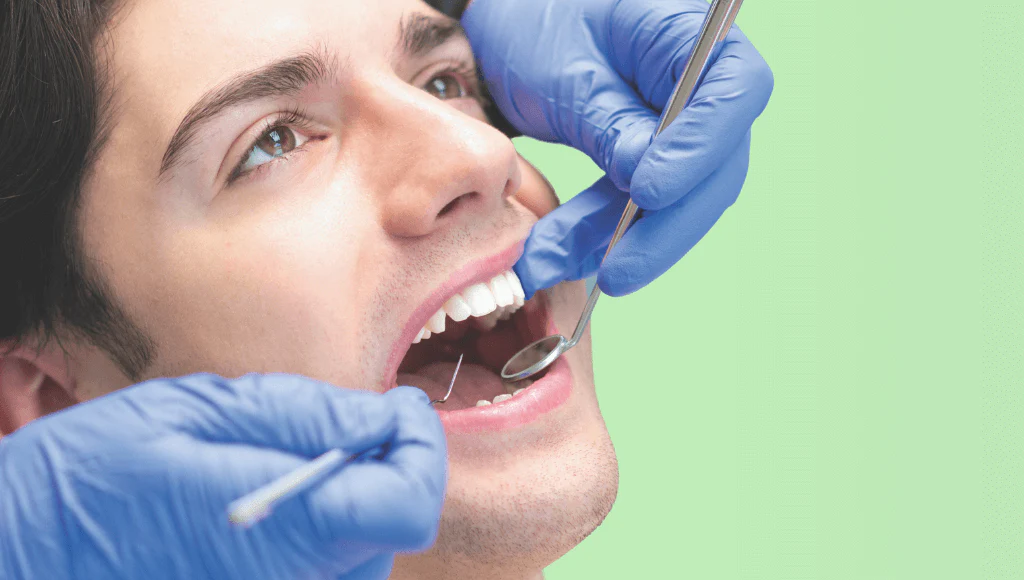Root surface caries are a common challenge in senior dental care, often resulting from age-related changes like gum recession and dry mouth. Silver diamine fluoride (SDF) has emerged as an effective and minimally invasive solution for managing this issue, especially in elderly patients who may have limited tolerance for traditional restorative procedures.
What is Silver Diamine Fluoride?
Silver diamine fluoride (SDF) is a topical agent composed of:
- Silver ions: Antimicrobial properties that kill cariogenic bacteria.
- Fluoride: Promotes remineralization of tooth structure.
- Ammonia: Stabilizes the solution for longer shelf life.
Approved for cavity management, SDF offers a unique ability to halt the progression of decay, making it ideal for seniors with root surface caries or complex medical conditions.
Why Root Surface Caries are Common in Seniors
- Gum Recession: Exposes vulnerable root surfaces to bacterial attack.
- Dry Mouth (Xerostomia): Commonly caused by medications, reducing saliva’s protective effect.
- Difficulty in Oral Hygiene: Limited dexterity may prevent effective brushing and flossing.
These factors make non-invasive, effective solutions like SDF invaluable in elderly dental care.
How SDF Works for Root Surface Caries
- Halts Caries Progression:
- Silver ions penetrate dentin to kill decay-causing bacteria.
- Fluoride strengthens the tooth and resists further demineralization.
- Minimally Invasive:
- No drilling required, making it suitable for patients with limited mobility or medical conditions.
- Prevents Secondary Decay:
- Antibacterial properties reduce the risk of new decay around treated areas.
Advantages of SDF for Seniors
- Non-Invasive Application:
- Applied directly to the carious lesion without anesthesia or drilling.
- Cost-Effective:
- Affordable alternative to traditional restorations, particularly beneficial for seniors on fixed incomes.
- Quick Procedure:
- Requires minimal chair time, making it accessible for patients with limited tolerance for prolonged dental visits.
- Reduced Risk of Complications:
- Avoids potential complications of invasive treatments, such as infection or prolonged healing times.
The SDF Application Process
- Preparation:
- Clean and dry the affected tooth surface.
- Application:
- Apply SDF using a microbrush to the carious lesion.
- Drying Time:
- Allow the solution to dry for at least one minute to ensure efficacy.
- Follow-Up:
- Reapply periodically, typically every 6–12 months, depending on the patient’s needs.
Managing Aesthetic Concerns
One drawback of SDF is its tendency to stain carious lesions black, a natural consequence of its interaction with decayed dentin. To address this:
- Informed Consent: Educate patients and caregivers about the benefits and potential staining.
- Strategic Use: Apply in non-aesthetic areas, such as posterior teeth.
- Composite Overlay: Cover treated lesions with tooth-colored materials in visible areas.
SDF vs. Traditional Restorative Methods
| Feature | SDF Treatment | Traditional Fillings |
|---|---|---|
| Invasiveness | Non-invasive | Requires drilling |
| Pain | None | Possible |
| Time Commitment | Minimal | Longer |
| Cost | Low | Higher |
Silver diamine fluoride offers a transformative approach to managing root surface caries in seniors, combining efficacy with minimal invasiveness. Its unique properties make it an excellent option for addressing the challenges of elderly dental care, particularly for patients with medical, financial, or accessibility limitations. By incorporating SDF into their practice, dentists can provide compassionate, effective care that prioritizes cavity management and patient comfort.

Leave a Reply